UNC Flashcards Photos
1/29
There's no tags or description
Looks like no tags are added yet.
Name | Mastery | Learn | Test | Matching | Spaced |
|---|
No study sessions yet.
30 Terms
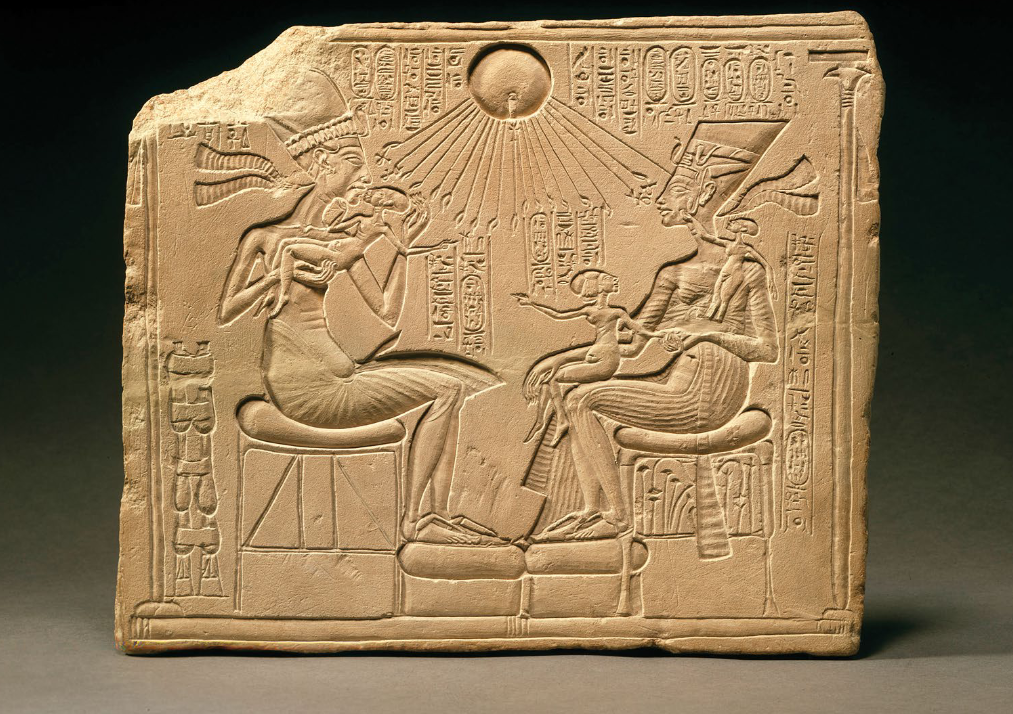
Stela of Akhenaten and his Family
Sun god Aten (Symbol of Life) above
Akhenaten, queen Nefertiti, and Children
Used for personal worship in a private home
Amarna Period
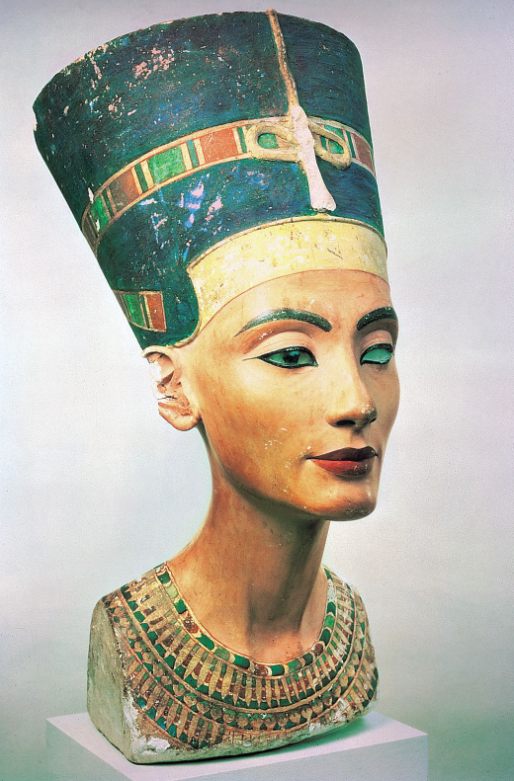
Bust of Nefertiti
Wife of the Akhenaten
Amarna Period
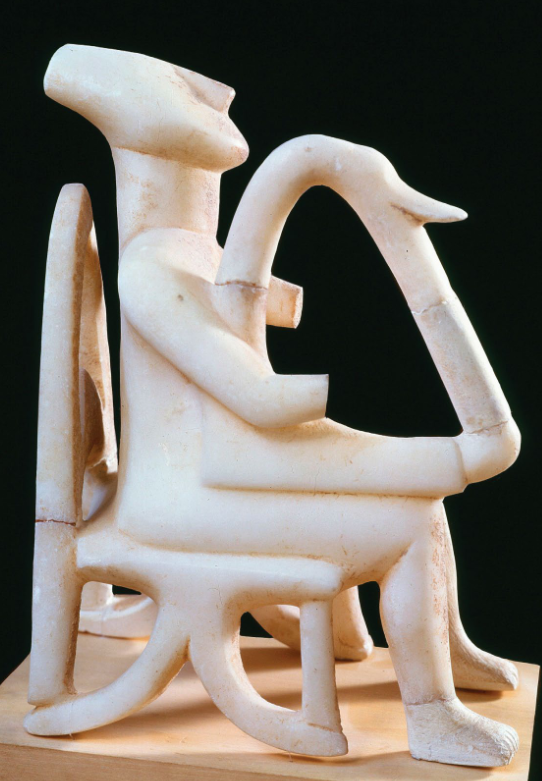
Male Lyre Player from Keros
Male figure playing a lyre
Cycladic

Palace of Knossos
Minoan civilization during the Bronze Age
Ceremonial and political center
Minoan Art

Minoan Bull-Leaping Fresco
Wall painting from the Palace of Knossos
Depicts three figures (1 Male 2 Female) and a charging bull
Minoan Art
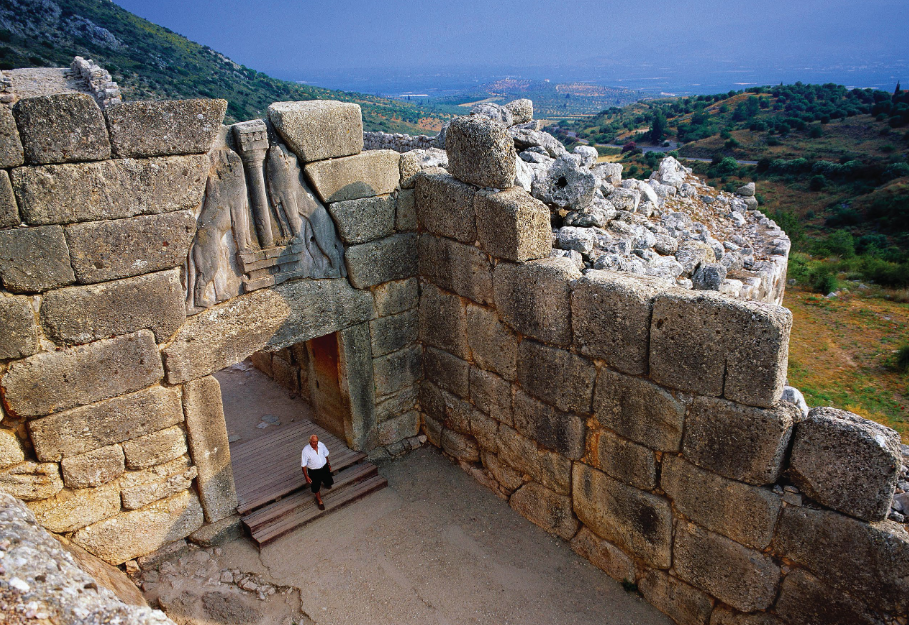
Lion Gate
Main entrance to the citadel
Sculpture of two lionesses standing on either side of a central column
Mycenean Art
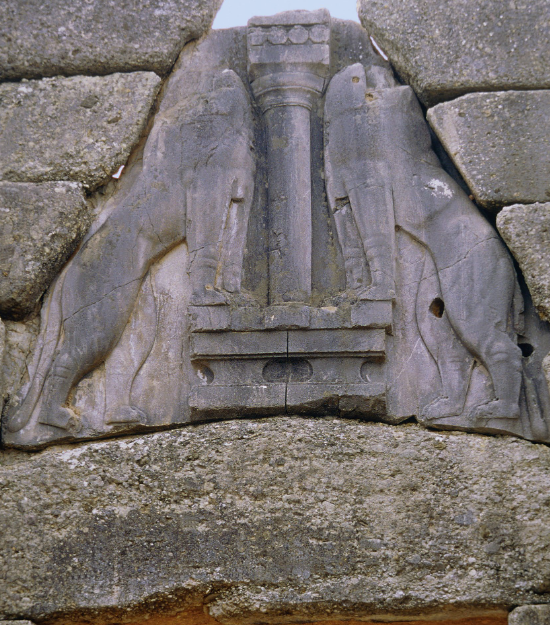

Mask of Agamemnon
Greek Bronze Age
Single thin sheet of gold that was hammered into shape
Mycenean Art

Dipylon Krater
The main scene depicts a prothesis surrounded by mourners
Geometric period

Temple of Hera II
6 fluted columns on the front and back
14 columns along each side
Archaic Period
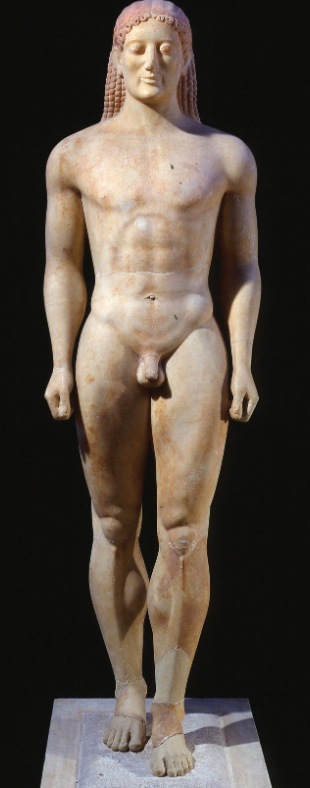
Kroisos Kouros
Used as a grave marker for a fallen young warrior
Archaic smile
kouros / kouroi = Greek for young man
Ideals of physical beauty and nobility
Archaic Period
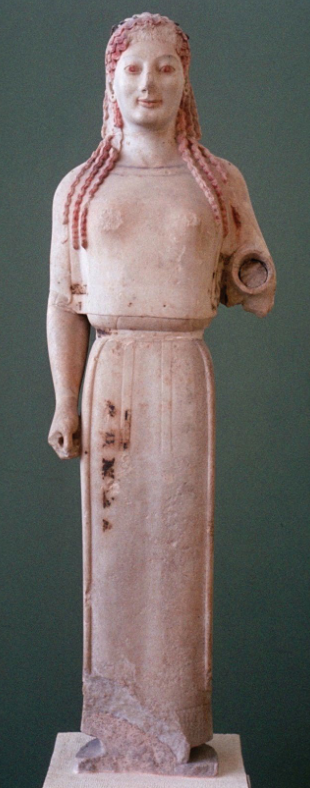
Peplos Kore
Kore / korai – Greek for woman
Named for her peplos
Archaic smile
Archaic Period
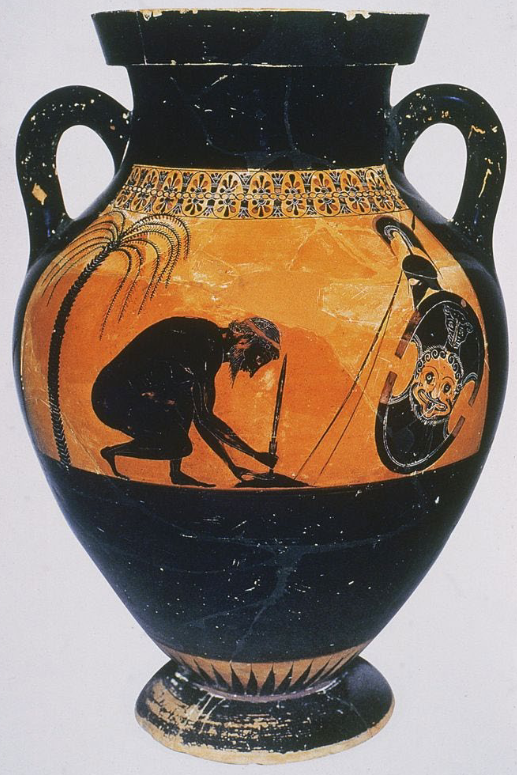
Suicide of Ajax
Ajax preparing to take his own life by burying his sword in the ground
Ajax committed suicide after he was denied the armor of the deceased Achilles
Archaic Period
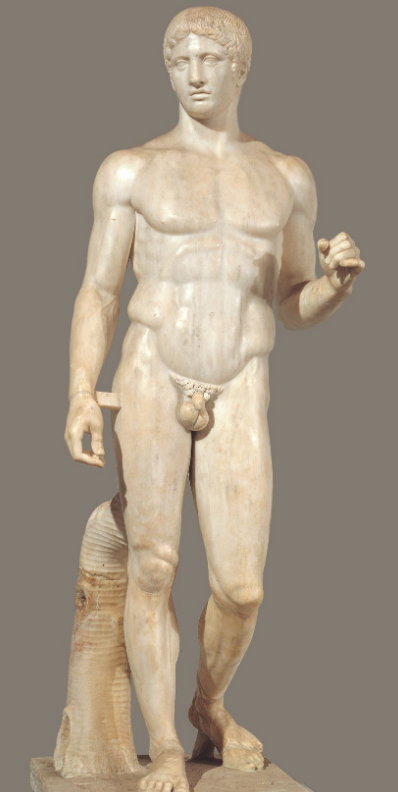
Doryphoros
Greek ideals of beauty and physical perfection
Mathematical Proportions
contrapposto
High Classical
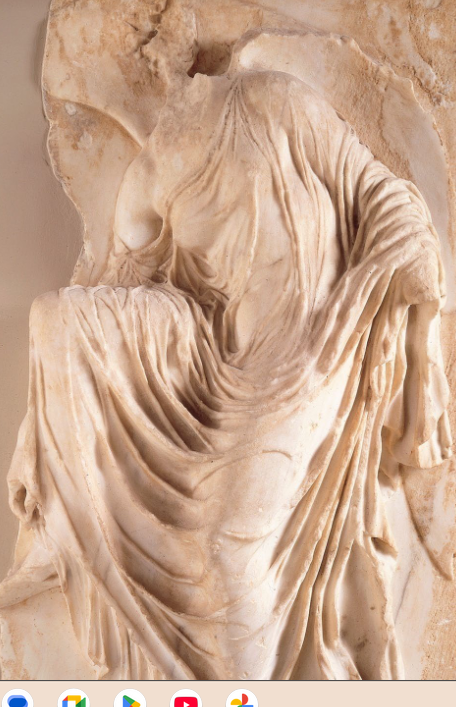
Relief sculpture of Athena Adjusting her Sandal
Late Classical
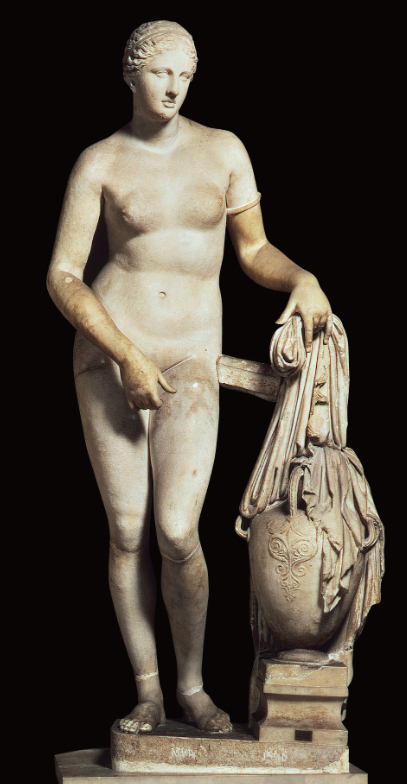
Aphrodite of Knido
Goddess Aphrodite preparing for a bath
Cult image in a temple at Knidos
Late Classical
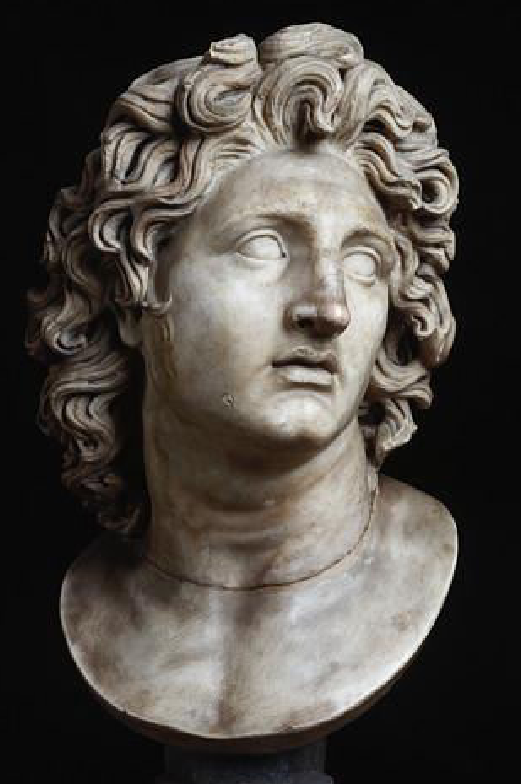
Alexander the Great
King of the ancient Greek kingdom of Macedo
Late Classical
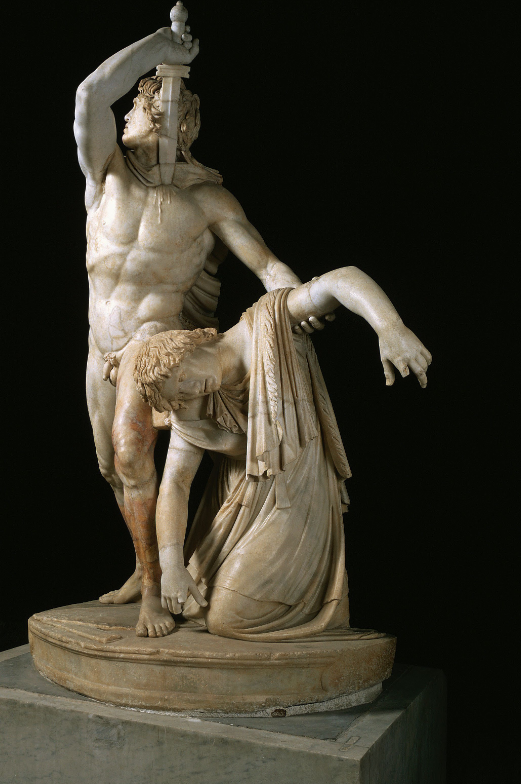
Ludovisi Gaul or Galatian Suicide
Gallic man in the act of plunging a sword into his own chest while holding the body of his dying wife
Hellenistic Art

Pergamon Altar
Gigantomachy — mythical battle between the Olympian gods and the Giants
Hellenistic period
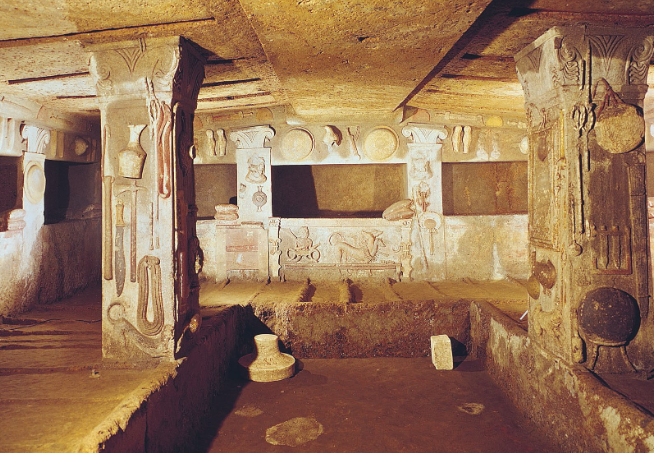
Tomb of the Reliefs
Carved from the local volcanic rock, stuccoed, and painted
Designed to resemble dining couches (klinai) for the deceased
Etruscan Art

Sarcophagus of the Spouses
Custom of shared banquets
Relative freedom enjoyed by Etruscan women
Etruscan Art
Amarna Period
Art: Naturalistic and expressive
Cycladic Period
Art: Stylized, geometric, figures
Minoan Period
Art: Large, complex palaces
Mycenean Art
Art: Stylized, geometric, and less naturalistic, favoring abstract
Geometric period
Art: Distinctive use of geometric patterns and motifs on pottery and other artifacts
Archaic Period
Art: more realistic style in sculpture and pottery (Black Figure Painting)
High Classical
Art: Idealized representation of the human form, with focus on grace and beauty
Late Classical
Art: Emphasis on anatomical accuracy (Introduce Emotion)
Hellenistic Period
Art: Emotional and Diverse
Etruscan Art
Art: Tombs depicting subjects reflecting on the enjoyment of life